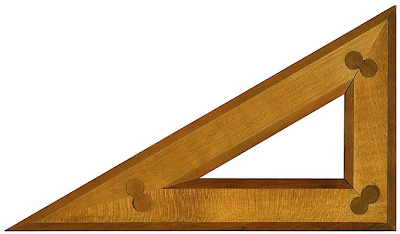From the 1930 Review of Revues, Diary Calendar brilliantly illustrated by Edward Bawden.
:: Another fine find from the Visual Telling of Stories.
Tuesday, May 31, 2011
Practical Principles
 |
| The Title Page designed by Bruce Rogers. |
 |
| Preface designed by Peter Beilenson |
 |
| Designed by Joseph Blumenthal and illustrated by Fritz Eichenberg. |
 |
| Designed by G. Gehman Taylor and George F. Trenholm. Illustrated by George Trenholm. |
 |
| Designed by Edwin and Robert Grabhorn. Illustrated by John Tennial. |
 |
| Designed by John Archer and illustrated by Joseph Low. |
 |
| Designed by James and Cecil Johnson. |
 |
| Designed by Hayworth Campbell. |
 |
| Designed and illustrated by Howard Trafton. |
 |
| Designed and illustrated by John Averill. |
 |
| Designed by Arthur W. Rushmore. |
 |
| Designed and illustrated by Raymond Lufkin. |
 |
| Designed and illustrated by Robert Foster. |
 |
| Designed and illustrated by Clarence P. Hornung. |
 |
| Designed and illustrated by Carl Purington Rollins. |
 |
| Designed and illustrated by Georg Salter. |
Monday, May 30, 2011
Mid-Century Asian Book Covers
 |
| I wish I knew the score on these book jackets. All that I know is they are from Quinn Dombrowski's Flickr set which she titled South Asian Books. Anyone else have a clue about them? My guess is they are of the mid-1960s and from either Thailand or Burma quite possibly? :: U P D A T E After sending a query to Quinn the other day, she has informed me these books were acquired for the University of Chicago from the Library of Congress Field Offices in New Delhi and Islamabad. Doh! Quite a distance from Thailand or Burma as I suggested, yet she confirmed they are from the 60s and 70s. I might add that Quinn spends a lot of time in libraries and has been documenting graffiti found in the public study areas at the Regenstein Library at the University of Chicago. Her collection of images began as a giant Flickr set and later developed into her blog, and a companion book. Well worth a read! |
Friday, May 27, 2011
Smoking Fine Designs
 |
| Some genuinely nice British cigarette cards mostly from the early 20th century. These are the back sides of cards with advertisements which are often far more decorative than the fronts. See more of this collection of cigarette and tobacco cards at cigcardpix flickr site. Some very fine examples there. |
Thursday, May 26, 2011
For Good Measure
 |
| 1916 protractor scale from A. Edgell & Co. |
 |
| J.Rabone & Sons folding rule from England |
 |
| Rowney & Co. protractor scale from England |
| Handmade figured maple & mahogany triangle with dumbell-shaped dovetail joints. |
 |
Boxwood perforation gauge, a stamp collecting tool. |
This is an actual promotional give-away printed on heavy paper, simulating a brass-fitted folding rule with an 1889 calendar on the flip side. :: All of these fine wooden drafting tools are from the Sheaff Ephemera Archives |
Tuesday, May 24, 2011
A Visit to the Printer
From the Puffin Picture Book of Printing by master printer Harold Curwen of the Curwen Press.
:: Via the Visual Telling of Stories
The Art of the Book Jacket
 |
| This is kind of like walking into a hall of mirrors. This wonderful front & back cover design by Hans Tisdall is for an exhibit about the history of book cover designs. It's from the 1949 exhibit catalog for The Art of the Book Jacket at the Victoria & Albert Museum which was the first international exhibit of it's kind. It featured some 460 examples of book jackets from 19 countries and helped to popularize the dust jacket or dust wrapper as it was often referred, beyond a purely utilitarian use. In the introduction to this catalog, Leigh Ashton writes that those who succeed in visually conveying the author's work, be it pictorial or typographical, have every right to be called true artists. :: The 1949 catalog cover of the V&A exhibit is from the Visual Telling of Stories archive. I can only presume the book jacket examples below may have been in the 1949 exhibit. :: All images below are from the Victoria & Albert Museum collections. |
 |
| Anonymous, 1928 |
 |
| Anonymous, 1935 |
 |
| E. McKnight Kauffer, 1928 |
 |
| Edward Bawden, 1932 |
 |
| Eric Fraser, 1937 |
 |
| Ernest Benn, 1928 |
 |
| Harold Jones, 1936 |
 |
| Jean Cocteau, 1932 |
 |
| John Armstrong, 1937 |
 |
| P. Youngman Carter, 1932 |
 |
| Paul Nash, 1930 |
 |
| Rex Whistler, 1933 |
 | ||||
Roger Fry, 1929
|
Subscribe to:
Posts (Atom)

























